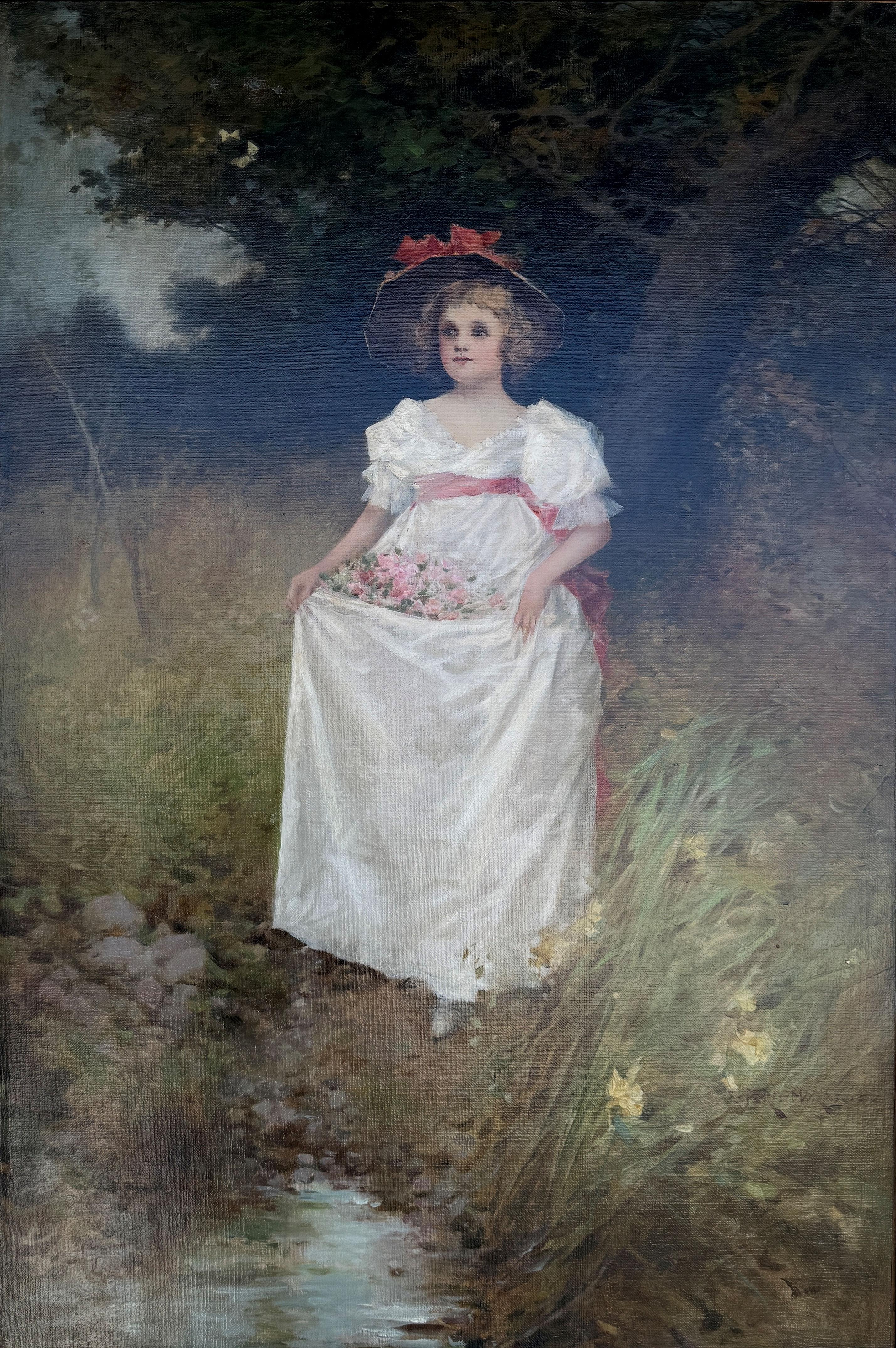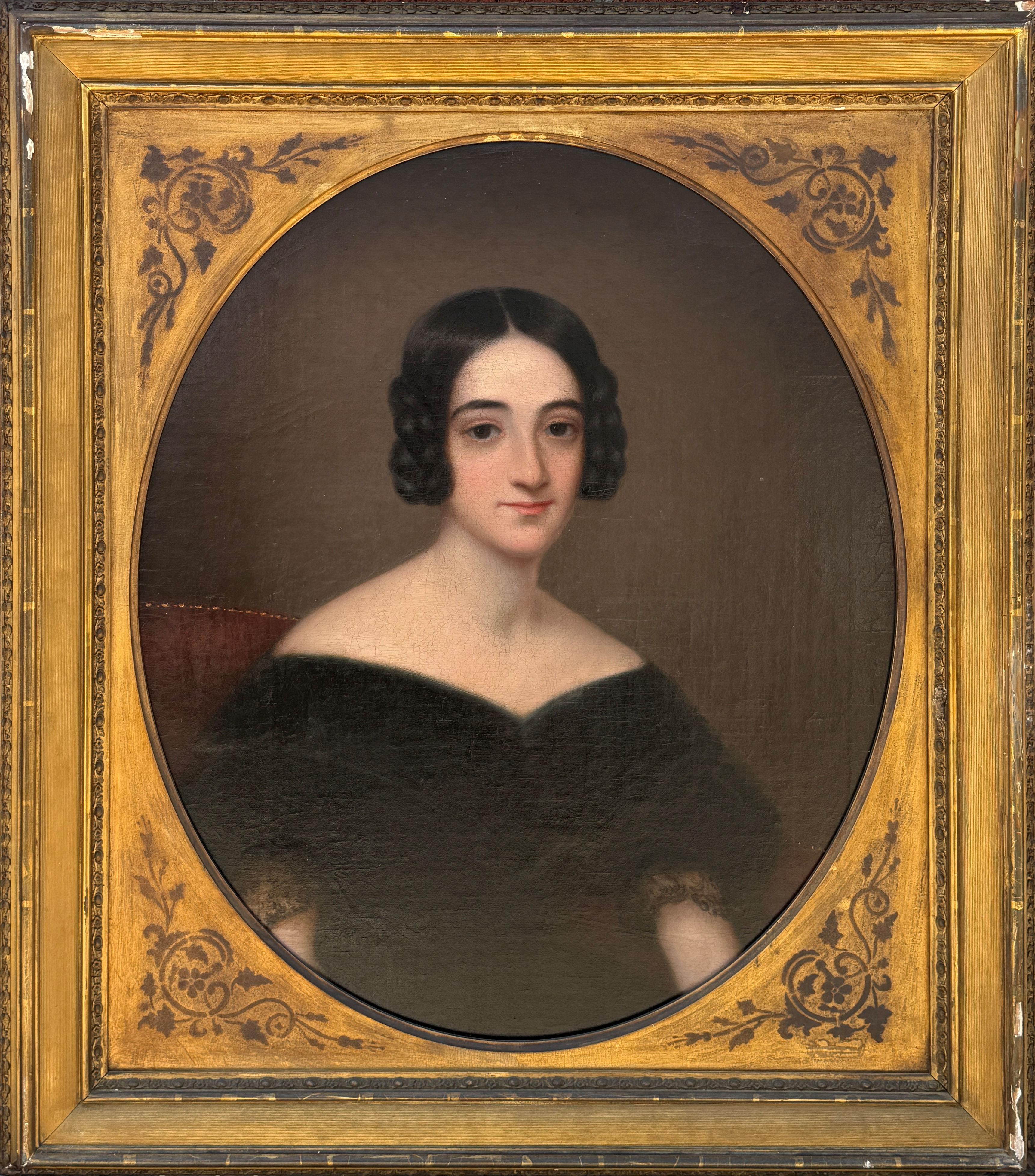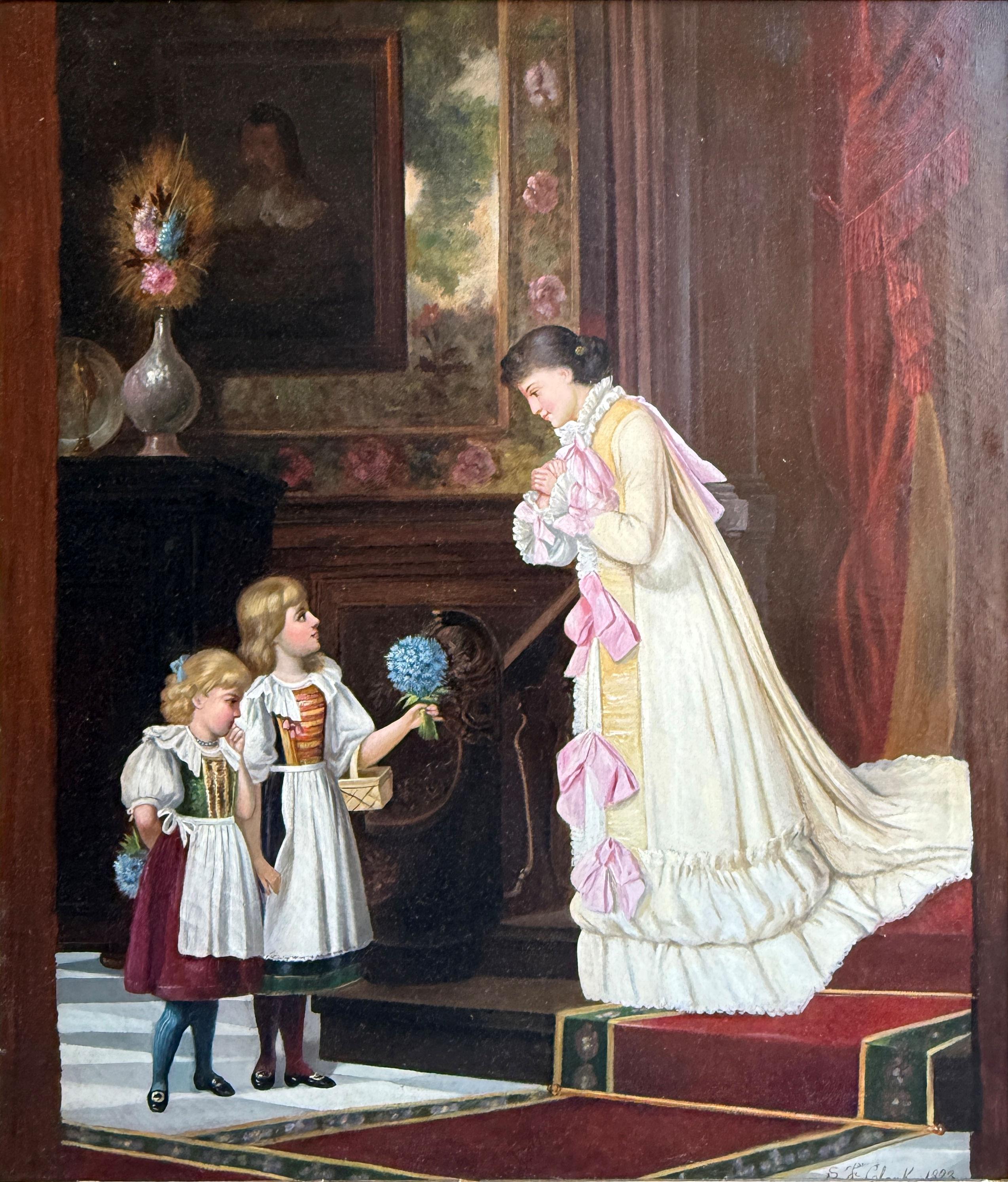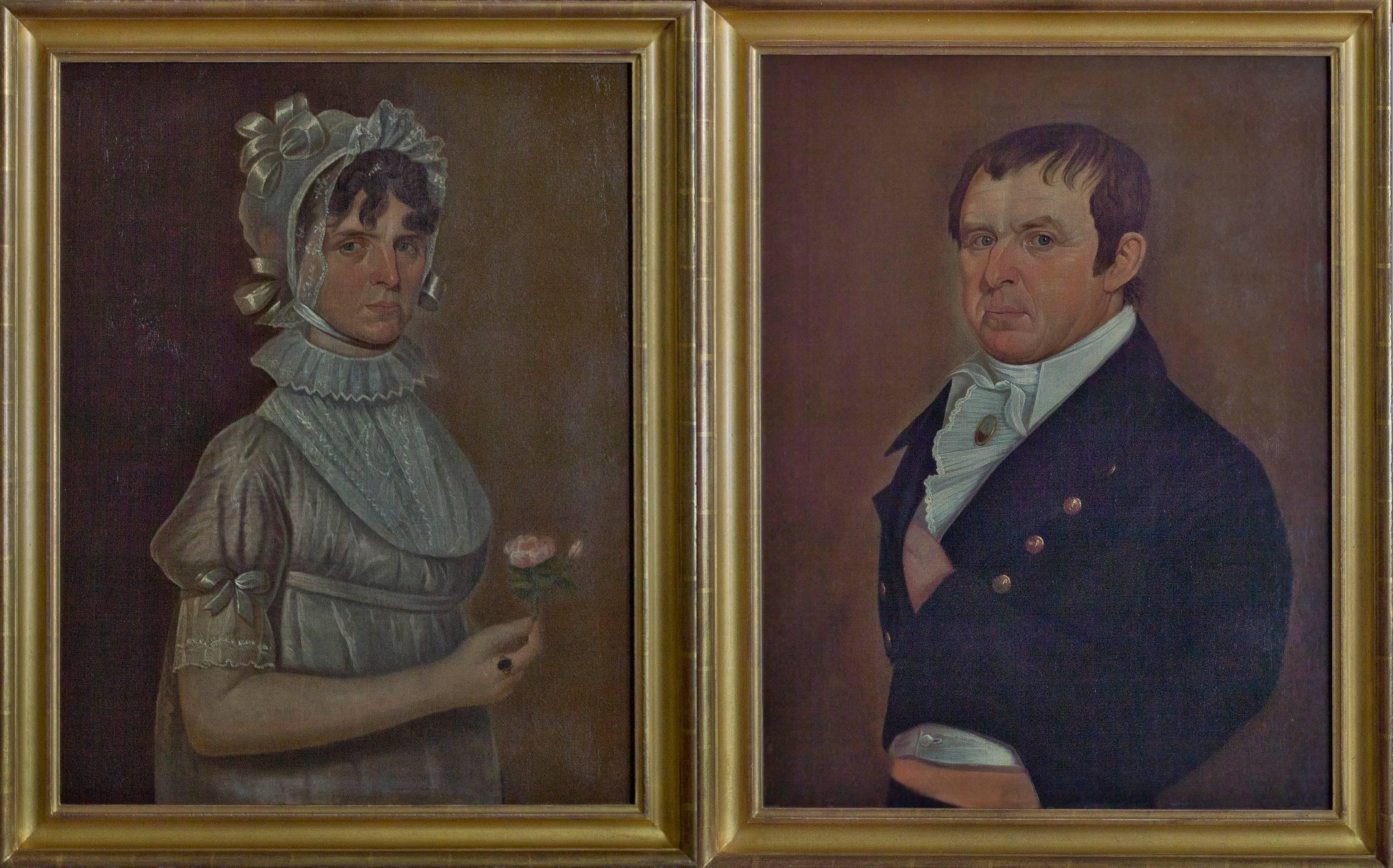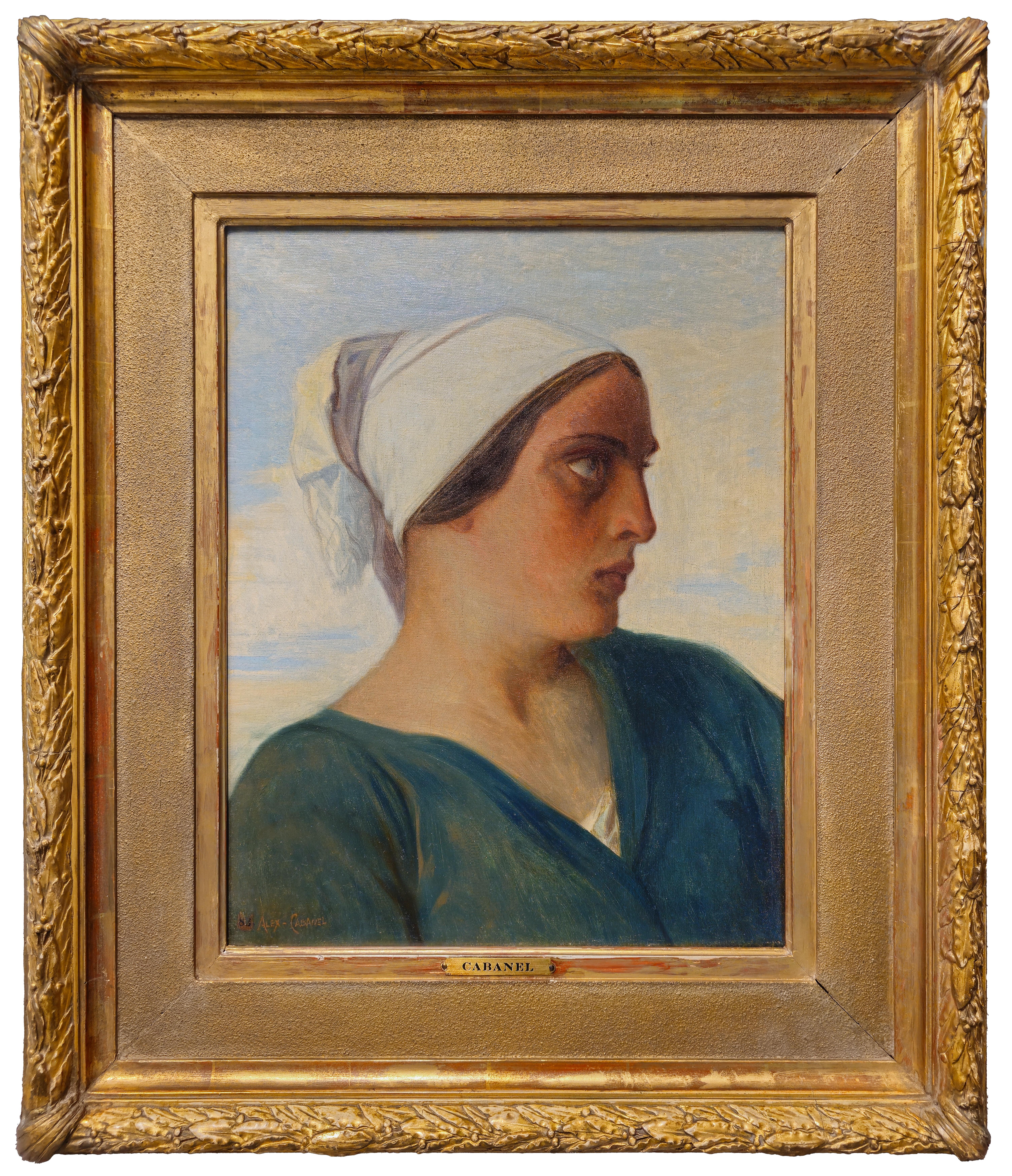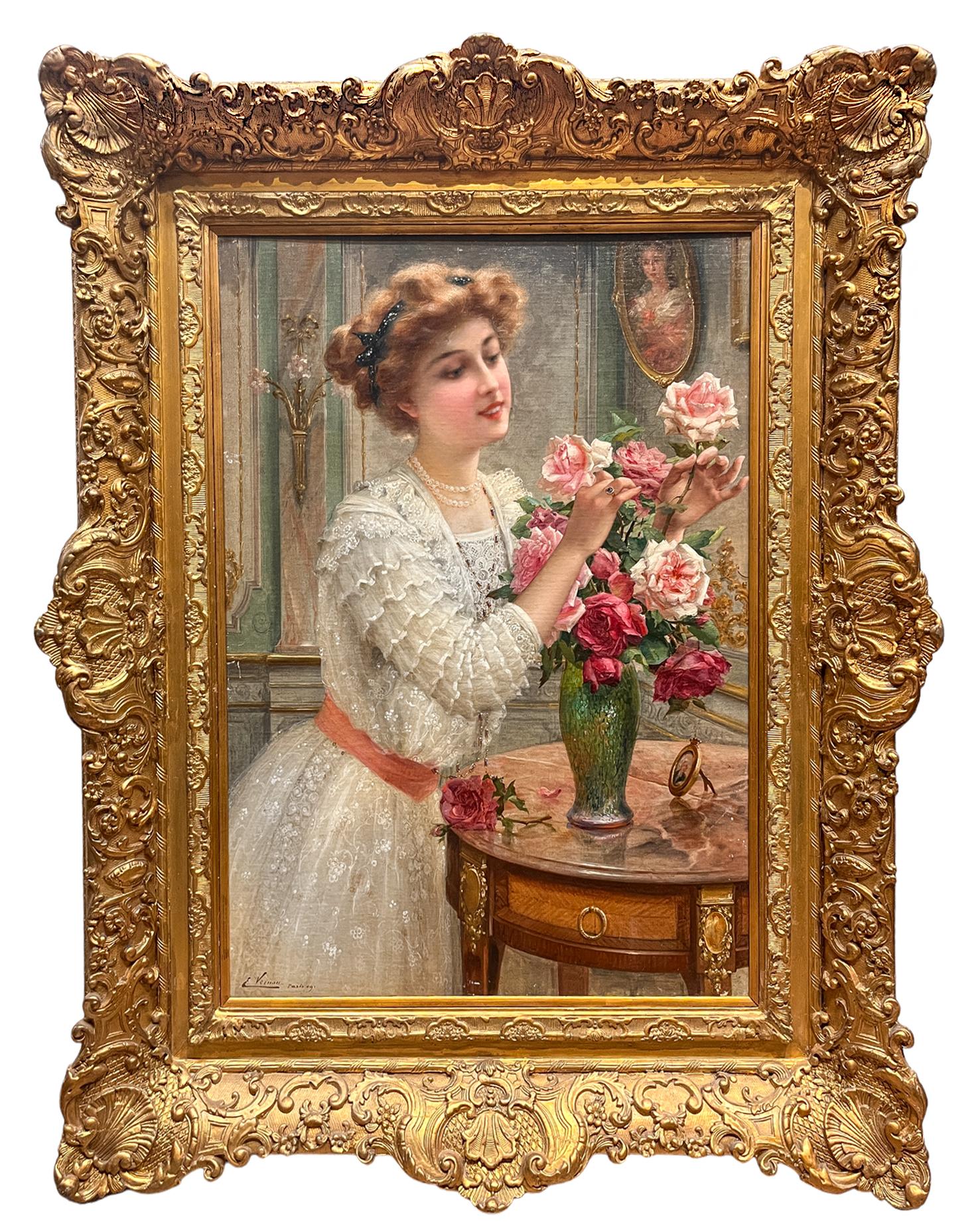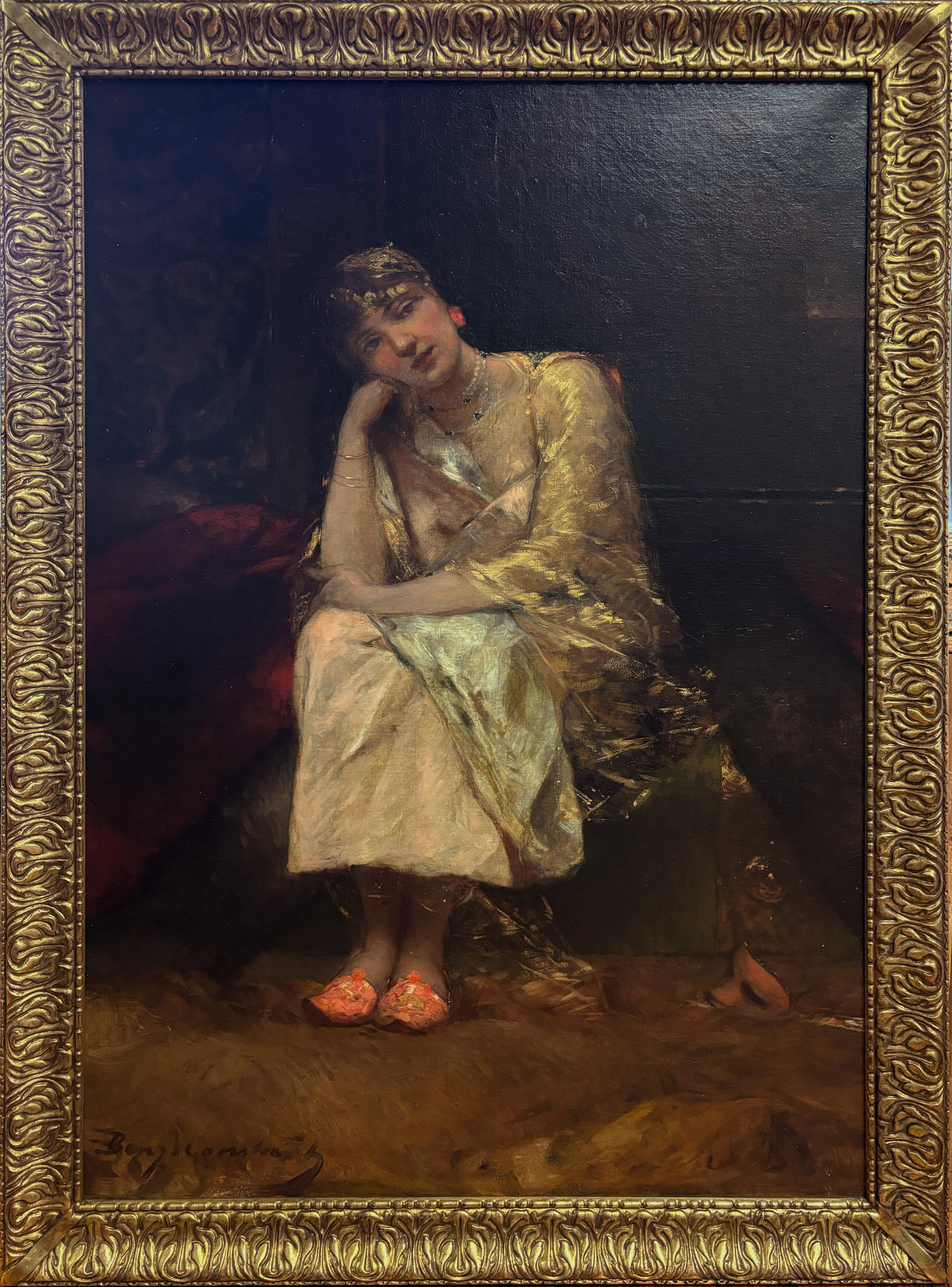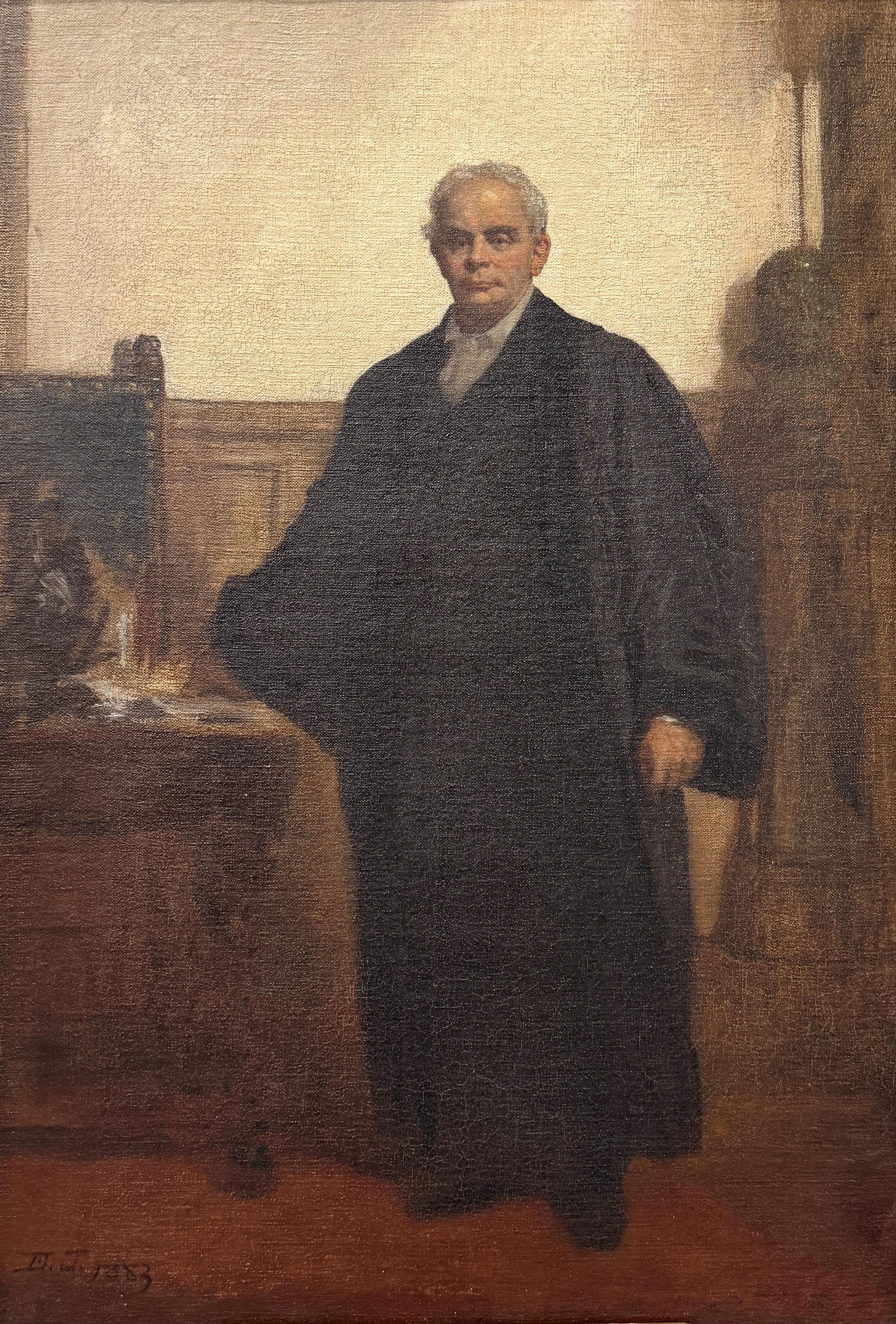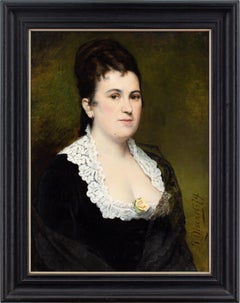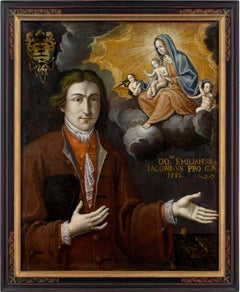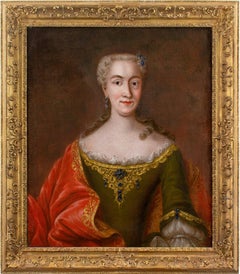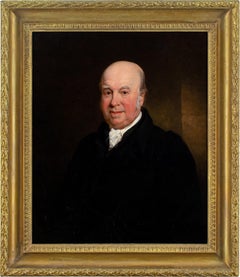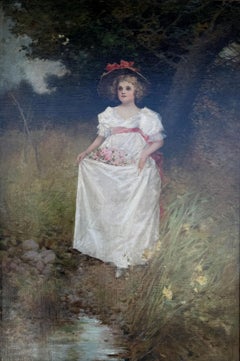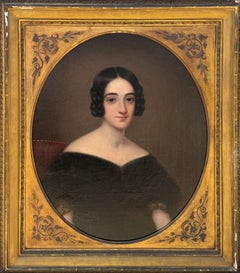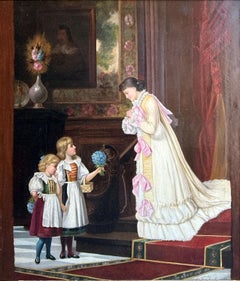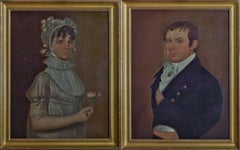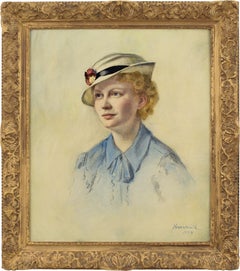
Bror Kronstrand, Portrait Of Brita Söderberg, Oil Painting
View Similar Items
Want more images or videos?
Request additional images or videos from the seller
1 of 12
Bror KronstrandBror Kronstrand, Portrait Of Brita Söderberg, Oil Painting1934
1934
$682.78List Price
About the Item
- Creator:Bror Kronstrand (1875 - 1950, Swedish)
- Creation Year:1934
- Dimensions:Height: 31.5 in (80.01 cm)Width: 27.5 in (69.85 cm)
- Medium:
- Movement & Style:
- Period:
- Condition:Artwork presents well. Two tidy patched repairs on the reverse. Frame with some light wear.
- Gallery Location:Cheltenham, GB
- Reference Number:1stDibs: LU2328211664762
About the Seller
5.0
Platinum Seller
Premium sellers with a 4.7+ rating and 24-hour response times
Established in 2017
1stDibs seller since 2023
244 sales on 1stDibs
Authenticity Guarantee
In the unlikely event there’s an issue with an item’s authenticity, contact us within 1 year for a full refund. DetailsMoney-Back Guarantee
If your item is not as described, is damaged in transit, or does not arrive, contact us within 7 days for a full refund. Details24-Hour Cancellation
You have a 24-hour grace period in which to reconsider your purchase, with no questions asked.Vetted Professional Sellers
Our world-class sellers must adhere to strict standards for service and quality, maintaining the integrity of our listings.Price-Match Guarantee
If you find that a seller listed the same item for a lower price elsewhere, we’ll match it.Trusted Global Delivery
Our best-in-class carrier network provides specialized shipping options worldwide, including custom delivery.More From This Seller
View AllJean Baptiste Discart, Portrait Of A Lady With A Yellow Rose
Located in Cheltenham, GB
This fine late 19th-century portrait by renowned Italian artist Jean Baptiste Discart (1856-1944) depicts a lady wearing a black dress embellished with a lace collar, together with a...
Category
Late 19th Century Victorian Portrait Paintings
Materials
Canvas, Oil
Early-18th Century French School, Ex-Voto Portrait With Emilian Jacobin
Located in Cheltenham, GB
This splendid early 18th-century French oil painting represents an ‘ex-voto’ with Emilian Jacobin and a depiction of the Virgin Mary with Christ and angels.
Ex votos are votive offe...
Category
1710s French School Portrait Paintings
Materials
Oil, Canvas
Mid-18th-Century French School, Portrait Of A Lady With Sapphires
Located in Cheltenham, GB
This charming mid-18th-century half-length French portrait depicts a lady wearing an olive green gown, together with a red cloak, and exquisite sapphi...
Category
Mid-18th Century Rococo Portrait Paintings
Materials
Oil, Canvas
Early 19th-Century English School Portrait Of Samuel Jones Of Skeyton, Norfolk
Located in Cheltenham, GB
This fine early 19th-century English oil painting depicts Samuel Jones of Skeyton, Norfolk, smartly attired in a black coat with white cravat. The portrait was previously in the coll...
Category
1830s Portrait Paintings
Materials
Oil, Canvas
Jacques d'Agar (Circle), Portrait Of A Gentleman In A Silk Robe
Located in Cheltenham, GB
This enchanting late 17th-century French oil painting depicts an elegant gentleman in a silk robe with his right index finger on an open book. Stylistically, it’s comparable to the oeuvre of Jacques d'Agar (1640-1715).
Dressed in a rather ostentatious embroidered silk robe...
Category
1670s French School Portrait Paintings
Materials
Oil, Canvas
Rowland Holyoake, Portrait Of A Girl With Wildflowers
Located in Cheltenham, GB
This charming late 19th-century oil painting by British artist Rowland Holyoake (1861-1928) depicts a girl carrying wildflowers while wearing a straw hat decorated with the same. It ...
Category
1880s Pre-Raphaelite Portrait Paintings
Materials
Oil, Canvas
You May Also Like
"Portrait of a Woman" Edward Percy Moran, Early American Portrait, Bucolic
By Edward Percy Moran
Located in New York, NY
Edward Percy Moran
Portrait of a Woman
Signed lower right
Oil on canvas
30 x 20 inches
Provenance:
The Madison Gallery, Atlanta
Percy Moran was the son of marine painter Edward Mo...
Category
1890s Academic Figurative Paintings
Materials
Canvas, Oil
"Portrait of Rebecca" Harriet Peale, Early American Female Portrait
By Harriet Cany Peale
Located in New York, NY
Harriet Peale
Portrait of Rebecca, 1840
Inscribed verso, “Portrait of Rebecca Greenwood (?)/ Aged 25 years/ Painted by Harriet C. Cany/ May 1840”
Oil on canvas
28 3/4 x 23 3/4 inches...
Category
1840s Academic Portrait Paintings
Materials
Canvas, Oil
"Interior Scene with Lady and Two Children" Sarah Anne Freeman Clarke
Located in New York, NY
Sarah Anne Freeman Clarke
Interior Scene with Lady and Two Children, 1883
Signed lower right
Oil on canvas
32 x 27 inches
Sarah Anne Freeman Clarke was born in Massachusetts in 180...
Category
1880s Academic Figurative Paintings
Materials
Canvas, Oil
18th century diptych portraits man and woman American formal dress flower
By William Jennys
Located in Milwaukee, WI
The present pair of portraits would make an exceptional addition to any collection of early American art not only because they were painted by the notable William Jennys, but also because the sitters are members of notable and influential New England families. In addition, these pendants have impeccable provenance: they have never left ownership of the decedents of the Kimball family and this is the first time they have been available for purchase.
David Kimball (1766-1848) and Nancy Stacy Kimball (1774-1844) were members of historic Massachusetts families. David Kimball is a sixth-generation decedent of Richard Kimball (d. 1675) and Ursula Scott (d. 1659), who emigrated from Rattlasden, Suffolk County, England to Watertown MA around 1634. The family then relocated in 1637 to Ipswich, the city with which the family is now most strongly identified, when Richard was appointed to be a wheelwright.[1] Nancy likewise had early New England ancestry, descended from Simon Stacy and Elizabeth Clark, who were married in London in 1620.[2]
Nancy Stacy was the second wife of David Kimball, and the two were married in 1799. Given this, the present pendant portraits were likely completed shortly after the marriage. David had two children by his first wife Mary Morse, who died in September of 1798. David and Nancy would have nine additional children between 1801 and 1815.[3]
Most notably, the couple were parents of the Boston politician and showman Moses Kimball (1809-1895).[2][3] Moses would found the Boston Museum, an early for-profit museum and theater opened in 1841 that resembled European curiosity cabinets: the museum displayed paintings of Thomas Scully and Charles Peale alongside Chinese artwork, stuffed animals, dwarves and mermaids. Alongside these exhibits, visitors could attend the theater which held performances by gymnasts and contortionists, followed by performances of Shakespeare and Dickens.[4] This museum set the model for the Museum of Fine Arts, Boston, which when founded in 1870 held a similarly diverse collection and appealed to the interests of a diverse set of visitors.[5] Moreover, some Greek antiquities from Moses Kimball's museum were eventually given to the MFA and Moses donated approximately $5,000 to the MFA's endowment upon his death.[6][7]
William Jennys (1774–1859), also known as J. William Jennys, is an important American primitive portrait...
Category
1790s Academic Portrait Paintings
Materials
Canvas, Oil
Academic 19th Century portrait of a young woman by Cabanel
By Alexandre Cabanel
Located in New York, NY
Alexandre Cabanel (1823–1889)
Portrait
Oil on canvas
Signed lower left
Alexandre Cabanel (1823–1889) was a prominent French academic painter known for his mastery of Neoclassical ...
Category
Mid-19th Century Academic Portrait Paintings
Materials
Canvas, Oil
$6,000 Sale Price
42% Off
Free Shipping
Portrait of a Young Man with a Straw Hat oil on canvas painting
Located in Barcelona, Barcelona
Title: Portrait of a Young Man with a Straw Hat
Artist: Josep Cusachs i Cusachs (1851-1908)
Year: 1884
Technique: Oil on canvas
Dimensions (unframed): 18.1 x 15 inches
Dimensions (fr...
Category
1880s Academic Portrait Paintings
Materials
Oil, Canvas
$9,567 Sale Price
33% Off
Recently Viewed
View AllMore Ways To Browse
Portrait Of An Elegant Woman Painting
Portrait Painting Of Princess
Gentleman Oil Portrait
Portrait King Charles
19th Century Children Portraits
Society Lady Painting
Woman In A Hat Portraits
18th Century Italian Portrait
18th Century British Portrait
Portrait Painting Girl 19th
17th Century Dutch Portrait
Oil On Canvas Military Portraits
18th Century English Oil Paintings
Blue Venus
Portrait Of A Little Girl
18th Century French Portrait Painting
Portraits Actress Painting
Lady B
